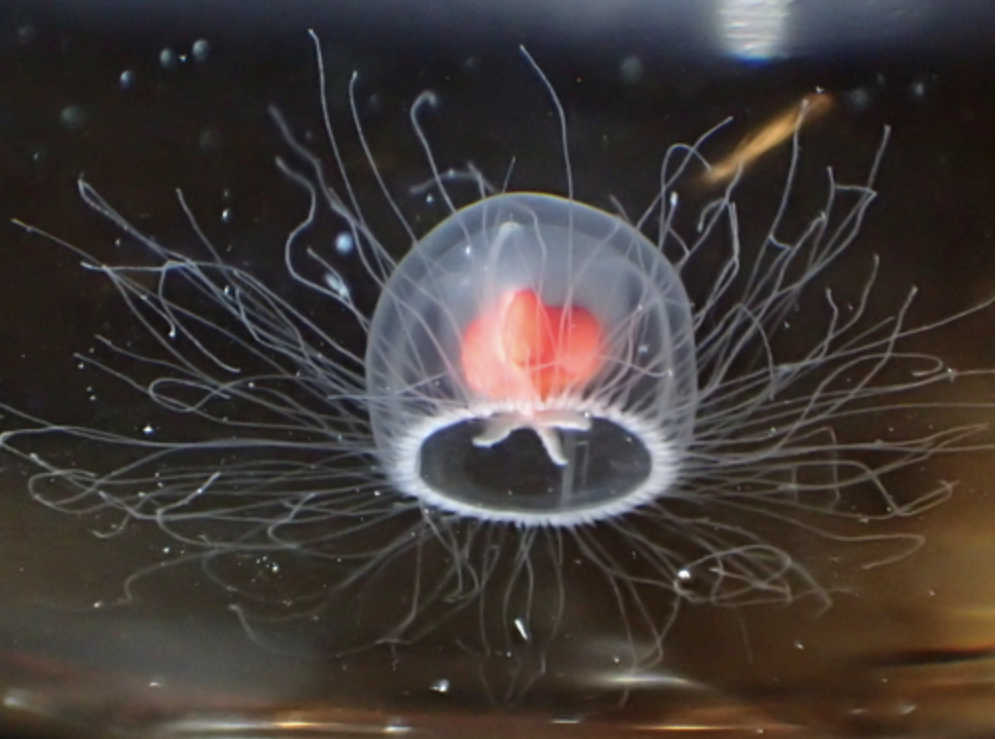Immortality is a concept that has been pondered upon for centuries. For humans that rarely live past 90, living forever is an impossibility that fascinates us. We write about it in literature, tell about its mythology and portray it in our movies. It is an unachievable idea for us, but for a tiny gelatinous creature, it is a real possibility.
Turritopsis dohrnii, nicknamed the immortal jellyfish, is quite the scientific marvel at just 4.5 mm tall. Their life cycle begins as most jellies do, adult medusas spawn eggs and sperm which combine to form a small larva or a planula which then becomes a colony of polyps. Jellyfish polyps secure themselves to hard surfaces at the bottom of the ocean while they develop a new set of muscles and a nervous system. Eventually they will detach and grow into a full grown medusa. For your everyday jellyfish, the medusa is the final stage of life and once injured, stressed or old, they die. Turritopsis dohrnii do not follow this strict timeline, instead they hit the reset button.

Picture of Turritopsis dohrnii © Tony Wills https://www.inaturalist.org/photos/10893106
When placed in conditions that should theoretically kill the medusa, the immortal jellyfish reabsorbs its tentacles, loses its ability to swim and floats down to the sea floor. It is within that blob that was once a jelly that the secret of immortality occurs. Luckily we know that this is not thanks to magic and instead the result of a biological process called transdifferentiation. Simply put, transdifferentiation is the process of one specialized cell transforming into another type of specialized cell. In the case of the jellyfish, the injured or stressed adult transforms itself back into polyps in under 36 hours. This process not only prevents the death of the original jelly, but also releases new genetically identical medusae. This species was originally discovered in the Mediterranean, but its unique ability to stay alive, seemingly indefinitely, has led to the spread of the species across the world. Although the population is growing, animals such as sea slugs, various crustaceans and sea turtles who feed on the immortal jellyfish keep its numbers in check. Scientists wonder if it is possible for a single jellyfish to truly live forever. Unfortunately, turritopsis dohrnii are quite fragile, making laboratory experiments difficult; additionally, it is impossible to run an experiment to prove that one jelly could live forever and we do not have the capability to track wild jellyfish to test the hypothesis either. It is very possible that one could survive predation and theoretically be truly immortal but such a theory is impossible to prove, so we must continue to ponder it.